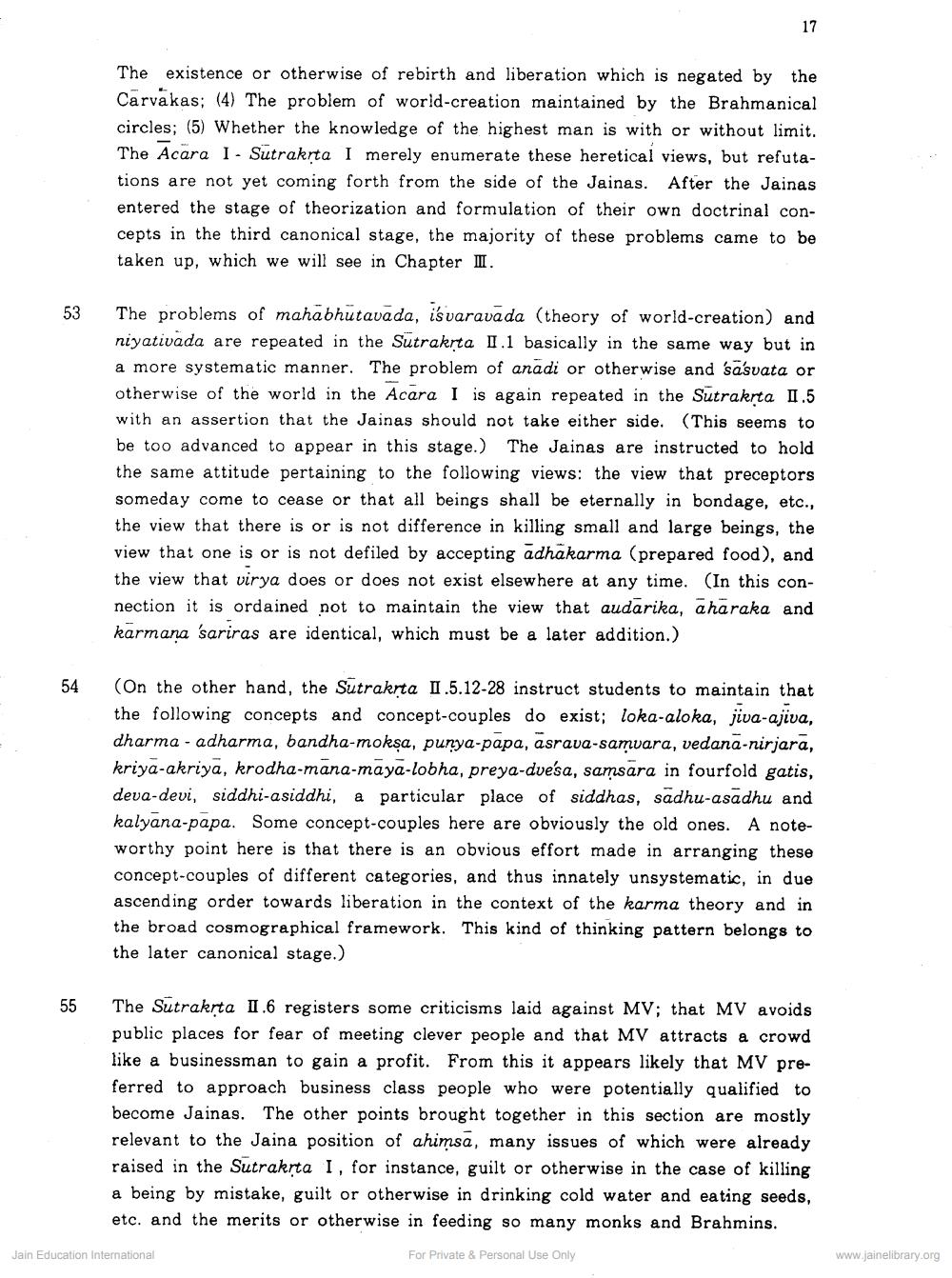________________
17
The existence or otherwise of rebirth and liberation which is negated by the Carvakas; (4) The problem of world-creation maintained by the Brahmanical circles; (5) Whether the knowledge of the highest man is with or without limit. The Acara 1 - Sutrakrta I merely enumerate these heretical views, but refutations are not yet coming forth from the side of the Jainas. After the Jainas entered the stage of theorization and formulation of their own doctrinal concepts in the third canonical stage, the majority of these problems came to be taken up, which we will see in Chapter I.
53
The problems of mahābhutavada, isvaravada (theory of world-creation) and niyativada are repeated in the Sutrakrta 1.1 basically in the same way but in a more systematic manner. The problem of anadi or otherwise and sa'svata or otherwise of the world in the Acara I is again repeated in the Sutrakrta 1.5 with an assertion that the Jainas should not take either side. (This seems to be too advanced to appear in this stage.) The Jainas are instructed to hold the same attitude pertaining to the following views: the view that preceptors someday come to cease or that all beings shall be eternally in bondage, etc., the view that there is or is not difference in killing small and large beings, the view that one is or is not defiled by accepting adhakarma (prepared food), and the view that virya does or does not exist elsewhere at any time. (In this connection it is ordained not to maintain the view that audarika, ahāraka and kärmana sariras are identical, which must be a later addition.)
(On the other hand, the Sutrakrta 11.5.12-28 instruct students to maintain that the following concepts and concept-couples do exist; loka-aloka, jiva-ajiva, dharma - adharma, bandha-mokşa, punya-papa, asrava-samvara, vedana-nirjara, kriya-akriya, krodha-mana-maya-lobha, preya-dve'sa, samsara in fourfold gatis, deva-devi, siddhi-asiddhi, a particular place of siddhas, sadhu-asādhu and kalyana-papa. Some concept-couples here are obviously the old ones. A noteworthy point here is that there is an obvious effort made in arranging these concept-couples of different categories, and thus innately unsystematic, in due ascending order towards liberation in the context of the karma theory and in the broad cosmographical framework. This kind of thinking pattern belongs to the later canonical stage.)
The Sutrakrta 11.6 registers some criticisms laid against MV; that MV avoids public places for fear of meeting clever people and that MV attracts a crowd like a businessman to gain a profit. From this it appears likely that MV preferred to approach business class people who were potentially qualified to become Jainas. The other points brought together in this section are mostly relevant to the Jaina position of ahimsa, many issues of which were already raised in the Sutrakrta I, for instance, guilt or otherwise in the case of killing a being by mistake, guilt or otherwise in drinking cold water and eating seeds, etc. and the merits or otherwise in feeding so many monks and Brahmins.
Jain Education International
For Private & Personal Use Only
www.jainelibrary.org




